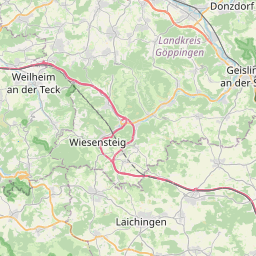






Description: Objective: The demonstration of the utilization of an isothermal latent heat store, integrated with a heat pump assisted space heating system for an existing large one-family house (240 m2). The latent store is designed to serve a dual purpose: 1. to act as a buffer storage, 2. to act as a stop-gap storage, delivering heat to the space heating circuit during those times of the day when the electric utilities may cut off the supply of electricity to the heat pump. Measurements shall be undertaken to demonstrate the long-term dynamic behaviour and the performance of the selected space heating system as a whole. Furthermore, the economics of the heat pump system employing a latent heat store shall be examined and visits to the demonstration unit shall be organised. General Information: The existing system is an oil-fired boiler and a central-heating with tube radiators. The new heating system comprises an outdoor heat pump, an oil-fired low temperature boiler, a separate domestic hot water tank, and the latent heat store. The latent heat store comprises a number of extruded aluminium tubes with a square outer cross section and an inner coolant carrying tube. The space between the fins is filled with the storage material, a mixture of two fatty acids with a melting point of 47 to 49 C. The heat pump is chosen to meet the heating requirements of the home at outdoor temperatures of + 2 C and above. At outdoor temperatures between + 2 C and - 8 C the heat pump together with the boiler will be in operation. At outdoor temperatures below - 8 C the boiler alone will supply the heat demand of the house and the heat pump will be cut off. For the existing radiators which are oversized, the maximum supply temperature and the corresponding return temperature should be 65 C and 47 C, respectively. The system is divided in two main hydraulic cycles. This is necessary because the mass flow rate in the heat distribution system (user cycle) is lower than the mass flow rate in the heat pump cycle. In this way the latent heat store can be charged during the night, when the user cycle is switched off. The generation of hot water has the highest priority. The controlling is divided in two main controlling cycles, day-time and night-time. The night-time controlling cycle is especially designed to charge the latent heat store. The storage capacity is chosen in such a way that the heat demand of the home can be met during the non-working periods of the heat pump at outdoor temperatures above + 2 C. Actually 30 kWh of latent heat capacity was installed, for a discharge time of 4.5 hours. Achievements: 1. The monitoring programme covered 196 days of full operation. The storage was used in a free running mode, i.e. it was used both as buffer store and also to supply heat at defrosting. The comfort conditions were controlled by the owner requirements. 2. During the normal operation the fraction of heat load provided by the heat pump was approximately 80 per cent, achieved ...
SupportProgram
Origins: /Bund/UBA/UFORDAT
Tags: Aluminium ? Brennstoff ? Einfamilienhaus ? Stromeinspeisung ? Raumwärme ? Stromversorgung ? Geothermie ? Kühlmittel ? Langzeitwirkung ? Latentwärme ? Temperaturverteilung ? Wärmebelastung ? Wärmeversorgung ? Wohngebäude ? Umweltcontrolling ? Niedrigenergiehaus ? Wärmebedarf ? Alternative Energie ? Elektrizitätsverbrauch ? Energieversorgung ? Heizöl ? Hydraulik ? Kosten-Nutzen-Analyse ? U-Bahn ? Wärmepumpe ? Wärmespeicher ? Warmwasser ? Gebäudetechnik ? Kreislaufsystem ? Energiegewinnung ? Heiztechnik ? Energiekosten ? Kontrollsystem ? Warmwasserbereitung ? Wirtschaftlichkeit ? Energienutzung ? Energieverbrauch ? Energieeinsparung ? Monitoringprogramm ? Monitoring ? Fließgeschwindigkeit ? GreenTech ? Versuchsanlage ? Heizung ? Kessel ? Pufferkapazität ? Außenbereich ? Tageszeitabhängigkeit ?
Region: Baden-Württemberg
Bounding boxes: 9° .. 9° x 48.5° .. 48.5°
License: cc-by-nc-nd/4.0
Language: Englisch/English
Time ranges: 1983-01-01 - 1986-10-30
Accessed 1 times.